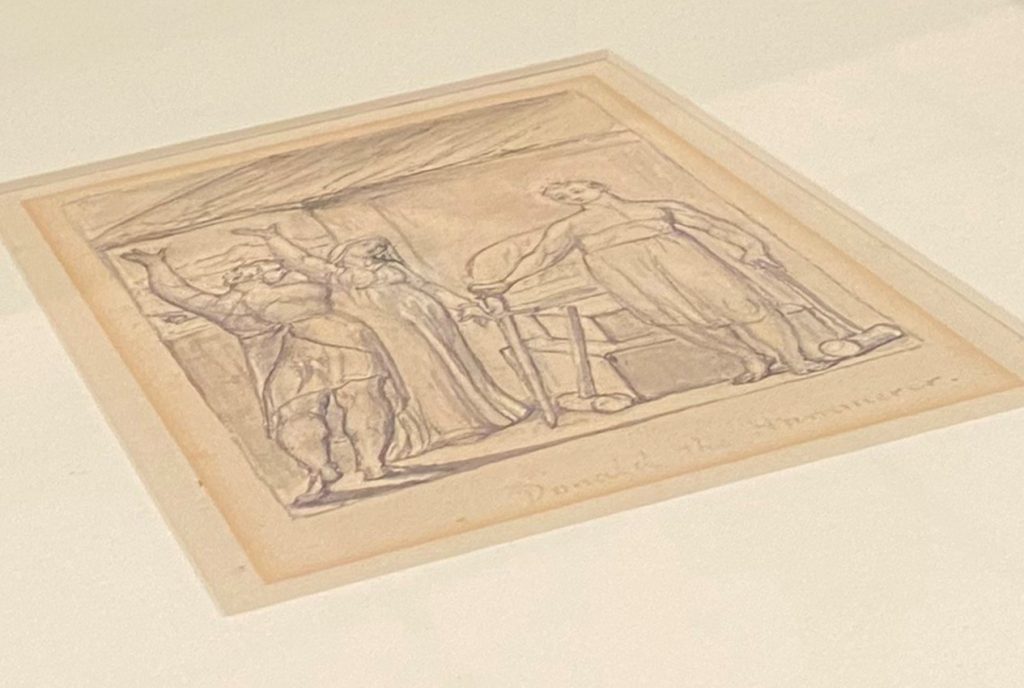Why does William Blake’s work resonate today? A UCLA art historian offers perspective

Emma Horio/UCLA
The William Blake drawing “Donald the Hammerer” can be viewed at UCLA Library Special Collections.
| December 19, 2023
William Blake is having a moment in Los Angeles.
A highly regarded exhibition at the Getty Center — a Los Angeles Times critic called it “unexpected and timely” — showcases more than 100 of his paintings, prints and poems, from all stages of his career. So why is it that a British artist who died nearly two centuries ago remains so vital today?
According to Zirwat Chowdhury, a UCLA art history professor, Blake engages deeply with the themes of war and science. His work is grounded in the context of upheaval — first, the French Revolution, and later, the Napoleonic Wars. Through that lens alone, the exhibition seems particularly resonant for modern viewers.
“He’s producing work that is very critical of what it means to get galvanized and carried away by the ethos of war,” said Chowdhury, who specializes in 18th and 19th century art. “Today, we encounter the horrors of war through videos and photographs. In the pre-photographic moment, the images Blake is producing have to convey that sense of terror, of destruction, of desolation, but also the semblance of hope that there could be something else.”
Chowdhury said Blake’s questioning of the prevalence of reason and rationality as dominant modes of thinking in the Enlightenment also has parallels today.
“We are also living in a moment where the sciences have a very particular resonance in our lives — a certain mode of scientific thinking is often taken for granted,” Chowdhury said. “In Blake’s moment, that was the legacy of Newtonian science. He is essentially asking, ‘If science and reason are supposed to be cultivating people into a more informed understanding of the world, how is it that we’re finding ourselves in a world that is being torn apart by war and destruction?’”
A printmaker by trade, Blake used the medium — which was conventionally seen as a way of copying, and not as a medium of originality — to create his innovative and salient works of art and poetry. Although he remained relatively obscure during his life, Blake is now recognized as a significant figure in English art and literature because of his innovative methods and revolutionary messages.
“Blake is somebody you can easily encounter in an English class, and you can easily encounter him in an art history class,” Chowdhury said.
A UCLA connection
The Getty isn’t the only place in Los Angeles to view works by Blake: UCLA Library Special Collections is home to a couple of Blake originals.
One of the pieces is a sketch that may be a preliminary study for “Enoch,” Blake’s only lithograph. The other, a drawing titled “Donald the Hammerer” is most likely an accompaniment for a work of literature written by another author. The pieces can be viewed upon request.
“William Blake: Visionary” is on view at the Getty Center through Jan. 14, 2024. Visit the exhibition page for more information.
